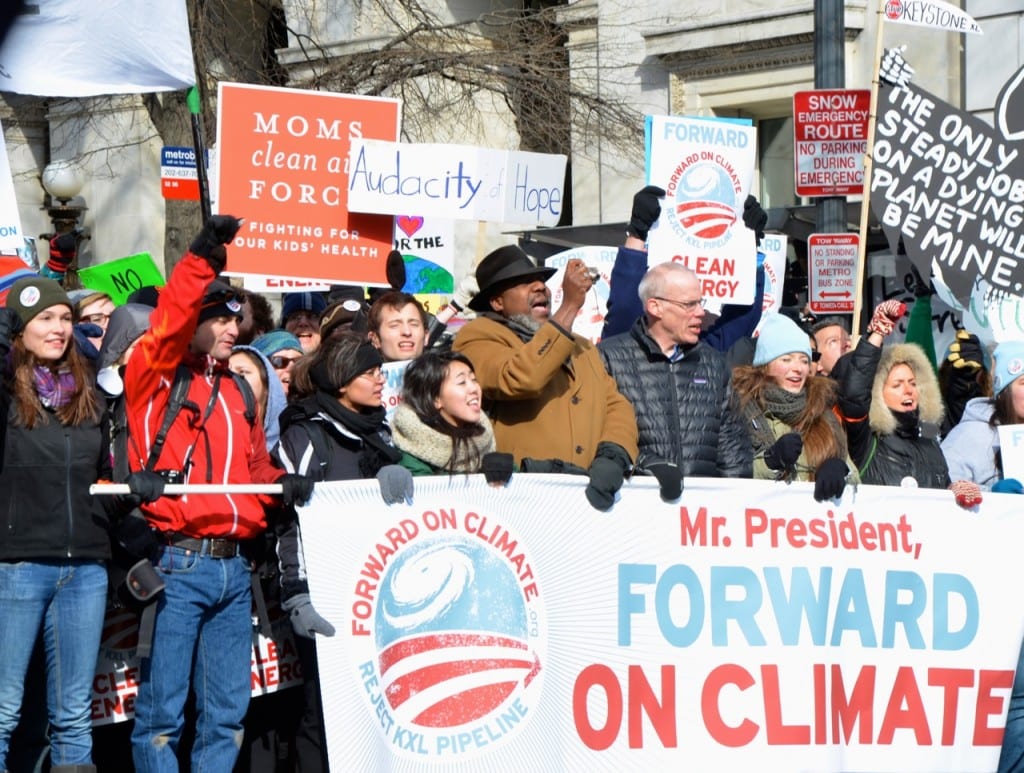By Glynn Wilson –
In another international report that will be largely ignored in Washington with climate change deniers in the White House and the number of federal employees and government regulations dwindling, the United Nations Intergovernmental Panel on Climate Change is meeting this week in Geneva, Switzerland and is set to release its latest report on Thursday dealing with the threats on agriculture from climate change due to global warming.
In an advance breaking news story on the latest report, the New York Times climate team released a story on Thursday that was the lede story on the Times website reporting that the world’s land and water resources are being exploited at “unprecedented rates,” which combined with climate change is putting dire pressure on the ability of humanity to feed itself.
The report, which would be confusing for the public to read and understand, explores how humans use land in ways that contribute to climate change, and how climate change affects land use.
“I hope this report will raise awareness among all people about the threats and opportunities posed by climate change to the land we live on and which feeds us,” IPCC Chair Hoesung Lee said in the press release announcing the report.
In addition to exploring the impact of climate change on land, the report also assesses how land management can contribute to addressing climate change and how this interacts with food security.
The IPCC’s Fifth Assessment Report, published in 2014, found that agriculture, forestry and other land use was the source of 24 percent of greenhouse gas emissions in 2010.
“This report addresses all three UN Rio conventions – climate, biodiversity and desertification – and thus our report recognizes the nexus of these global challenges and demonstrates the broad policy relevance of the IPCC’s work,” Lee said.
One of the main reported findings was that the window to address the threat from climate change is rapidly closing.
A half-billion people already live in places turning into desert. Soil is being lost up to 100 times faster than it is forming. Floods, drought, storms and other types of extreme weather threaten to disrupt and shrink the global food supply.
More than 10 percent of the world’s population remains undernourished, already, and some authors of the report warned in interviews that food shortages could lead to an increase in cross-border migration, a crisis already happening in some parts of the world, including Central America.
According to Cynthia Rosenzweig, a senior research scientist at the NASA Goddard Institute for Space Studies and one of the lead authors of the report, one of the primary fears is that food crises could develop on several continents at once.
“The potential risk of multi-breadbasket failure is increasing,” she said. “All of these things are happening at the same time.”
The report suggests that food shortages are likely to affect poorer parts of the world more than richer countries, although the crisis is already increasing the immigration flow and impacting politics and policies in North America, Europe and other parts of the world.
“People’s lives will be affected by a massive pressure for migration,” said Pete Smith, a professor of plant and soil science at the University of Aberdeen and one of the report’s lead authors. “People don’t stay and die where they are. People migrate.”
The number of migrants from El Salvador, Guatemala and Honduras showing up at the United States’ border with Mexico increased fivefold between 2010 and 2015, for example, coinciding with a very dry period in Central America that left many without enough food. The drought was so unusual that scientists say it was the result of climate change.
Without immediate action on a massive scale, and soon, the report concludes, climate change will accelerate the danger of severe food shortages. As a warming atmosphere intensifies the world’s droughts, floods, heat waves, wildfires and other weather patterns, it is speeding up the rate of soil loss and land degradation.
The report lays out some ways of potentially addressing the looming food crisis, although they would require a major re-evaluation of farming practices and land use on a global scale, as well as drastic changes in consumer behavior in developed countries unprepared to change due to the lack of political leadership and public will.
The productivity of land would have to be increased in ways farmers are unprepared for. Humans would have to waste far less food. People would have to be persuaded more to drastically change their diets away from eating beef and other types of meat.
In addition, the already higher concentrations of carbon dioxide in the atmosphere — the greenhouse gas resulting from the burning of fossil fuels like oil and coal for energy — will reduce the nutritional quality of food. Rising temperatures also cut crop yields and harm livestock.
Those changes threaten to exceed the ability of the agriculture industry to adapt, according to the report.
While the report acknowledges that in some cases a warming planet is boosting some food production with greater yields of some crops at higher latitudes, that is offset by the impacts already being felt from climate change by lost land from erosion, desertification and rising sea levels.
The bottom line is, if emissions of greenhouse gases continue to go up, and there’s no indication this phenomenon will slow soon without drastic changes in human behavior, the cost of food will also continue to rise, affecting people across the globe.
“You’re sort of reaching a breaking point with land itself and its ability to grow food and sustain us,” said Aditi Sen, a senior policy adviser on climate change at Oxfam America, an antipoverty advocacy organization.
Then even as climate change makes agriculture more difficult, agriculture itself is also exacerbating climate change, according to the report, a catch-22 that may not be solvable even if immediate action were taken by governments around the world.
Cattle are significant producers of methane, for example, which is also a powerful greenhouse gas. An increase in global demand for beef and other meats has fueled a rise in their numbers and increased deforestation in critical forest systems like the Amazon rain forests.
Since 1961 methane emissions from ruminant livestock, which include cows as well as sheep, buffalo and goats, have significantly increased, according to the report. And each year, the amount of forested land that is cleared — much of that propelled by demand for pasture land for cattle — releases the emissions equivalent of driving 600 million cars.
The reports’ authors urge changes in how food is produced and distributed, including better soil management, crop diversification and fewer restrictions on trade (rather than trade wars).
They also call for shifts in consumer behavior, noting that at least one-quarter of all food worldwide is wasted.
Protecting the food supply and cutting greenhouse emissions can come into conflict, they say, forcing tough choices.
The widespread use of bioenergy — such as growing corn to produce ethanol — could lead to the creation of new deserts or other land degradation. Planting large numbers of trees to pull carbon dioxide out of the atmosphere can result in pushing crops and livestock onto less productive land.
Planting as many trees as possible would reduce the amount of greenhouse gases in the atmosphere by about nine gigatons each year, according to Pamela McElwee, a professor of human ecology at Rutgers University and one of the report’s lead authors. But it would also increase food prices as much as 80 percent by 2050.
“We cannot plant trees to get ourselves out of the problem that we’re in,” Dr. McElwee said. “The trade-offs that would keep us below 1.5 degrees, we’re not talking about them. We’re not ready to confront them yet.”
Preventing global temperatures from rising more than 1.5 degrees Celsius is likely to require both the widespread planting of trees as well as “substantial” bioenergy to help reduce the use of fossil fuels, the report finds. And if temperatures increase more than that, the pressure on food production will increase as well, creating a vicious cycle.
“Above 2 degrees of global warming there could be an increase of 100 million or more of the population at risk of hunger,” Edouard Davin, a researcher at ETH Zurich and an author of the report, told the Times. “We need to act quickly.”
The full title of the report is “Climate Change and Land: an IPCC special report on climate change, desertification, land degradation, sustainable land management, food security, and greenhouse gas fluxes in terrestrial ecosystems.” It is the first IPCC report in which a majority of the authors are from developing countries.
The report is being prepared under the scientific leadership of all three IPCC Working Groups, in consultation with the Task Force on National Greenhouse Gas Inventories and with technical support from the Working Group III Technical Support Unit, and it was prepared by 107 experts from 52 countries and includes work from 7,000 published studies.
The longer policymakers wait, according to the report, the harder it will be to prevent the spread of an irreversible global crisis.














